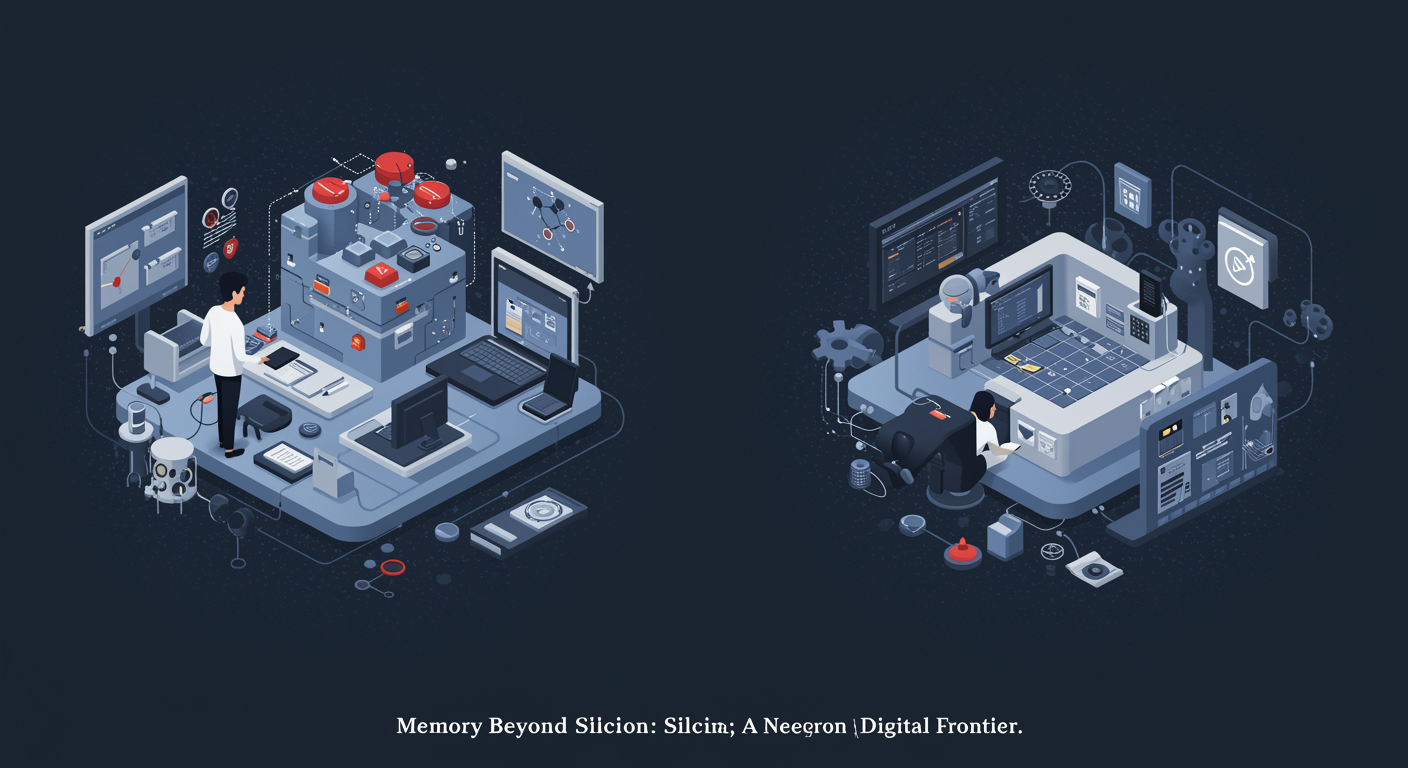
A tiny, unremarkable piece of material can store information by changing its physical properties based on past experiences. This isn’t a computer’s hard drive or a biological brain, but an inorganic component like a thin film or crystalline structure that “remembers” how much electrical current has flowed through it or how it was previously stressed. This isn’t science fiction; it’s a rapidly evolving area of research fundamentally challenging our understanding of what constitutes memory, opening up surprising avenues for future technology.
For decades, the concept of memory in computing has been neatly compartmentalized. We have processors that handle calculations, and separate memory units that store data, shuttle it back and forth. This architecture, known as the von Neumann model, has been the backbone of every computer we use. However, the energy cost and speed limitations of moving data between these separate units are becoming significant hurdles. The physical world, it turns out, might hold a more integrated solution, where computation and memory aren’t just co-located but fundamentally intertwined within the material itself.
At the heart of this shift is the memristor, a portmanteau of “memory resistor,” first theorized by Leon Chua in 1971. For nearly four decades, it remained a theoretical fourth fundamental circuit element, alongside the resistor, capacitor, and inductor. Then, in 2008, a team at Hewlett-Packard led by R. Stanley Williams announced they had created a physical memristor using a thin film of titanium dioxide. What makes a memristor special? Its electrical resistance isn’t constant; it changes based on the charge that has previously passed through it. If you send current in one direction, its resistance might decrease; in the other, it might increase. Crucially, it retains this resistance state even after the power is turned off. It possesses non-volatile memory, inherently built into its electrical behavior. This represents a significant innovation in material science.
Think of it like this: a conventional resistor is like a fixed-width pipe, always offering the same resistance to water flow. A memristor, however, is like a pipe whose diameter changes depending on how much water has flowed through it in the past, and it stays at that new diameter until more water flows. This means its “memory” is a physical imprint, a modification of its internal state. This characteristic makes memristors powerful candidates for a new generation of digital computing devices, blurring the lines between processing and storage in ways previously unimaginable.
Beyond memristors, other inanimate structures also exhibit similar memory-like behaviors. Phase-change materials (PCMs), for instance, can switch between amorphous (disordered) and crystalline (ordered) states when heated and cooled. Each state has distinct electrical resistance or optical reflectivity, allowing them to store binary information. These materials are already used in some re-writable optical discs and even some cutting-edge solid-state drives. Another example includes certain ferroelectric materials, whose polarization can be switched and retained, effectively remembering an electrical state. These are not just exotic lab curiosities; they hint at a deeper principle.
The implications for AI and neuromorphic computing are profound. Biological brains don’t separate processing from memory; synapses, the connections between neurons, change their strength based on past electrical activity. This plasticity is how brains learn and remember. Memristors and similar materials, with their ability to retain a history of electrical events within their physical structure, offer a compelling analogy to synapses. Imagine a computer chip where every processing unit also inherently remembers its past interactions, much like a neuron adjusting its connection strength. Such an architecture could lead to incredibly energy-efficient and powerful AI systems, capable of learning in a much more brain-like fashion.
Of course, translating these laboratory breakthroughs into widespread commercial products presents considerable engineering challenges. Scaling up production, ensuring reliability over billions of cycles, and integrating these novel components with existing silicon-based architectures are all significant hurdles. Furthermore, the precise control over the physical modifications within these materials requires sophisticated manufacturing processes. However, the potential gains in computational efficiency and new capabilities are driving intense research and development efforts across the globe.
Ultimately, the emergence of ‘memory’ in these simple, inanimate structures is a powerful reminder that the physical world holds vast, untapped potential for information processing. It suggests that computation isn’t just an abstract process confined to software or specific electronic components, but a property that can be intrinsically embedded within matter itself. As we continue to explore these materials, we might not just build faster computers, but fundamentally redefine how we think about intelligence, learning, and the very fabric of information.